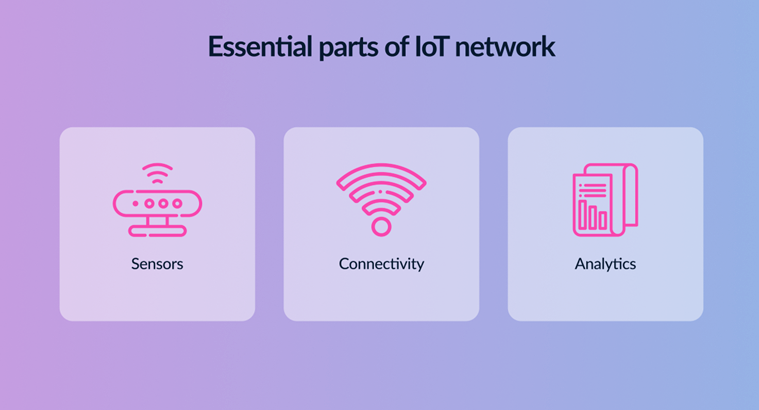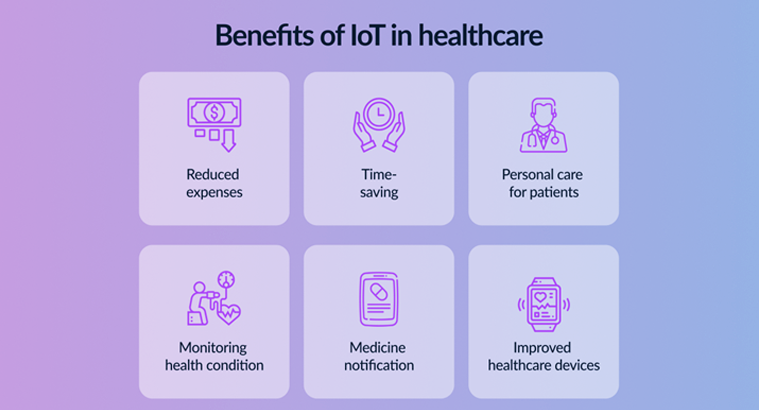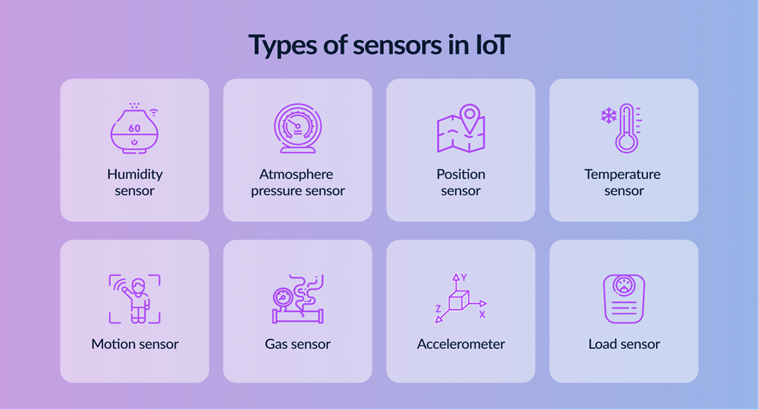The Internet of Things (IoT) is a rapidly growing technology that connects everyday devices to the internet, allowing them to collect and share data. This technology has the potential to revolutionize the way businesses operate by enabling new ways of collecting and analyzing data, automating processes, and improving efficiency. In this post, we will take a detailed look at the benefits and challenges of implementing IoT in business.
Benefits of IoT in Business
Let’s begin the guide with the value of the described technology and see what benefits IoT solutions bring to the business:
Better Decision Making
IoT allows businesses to collect and analyze large amounts of data, which can be used to make more informed decisions. In practice, a retail store can use IoT sensors to track customer behavior and movement throughout the store, allowing the business to understand which products are most popular and which areas of the store are most frequented, as well as identify which products are selling well. This information can then be used to adjust inventory levels and improve sales, as well as optimize store layouts, product placement, and marketing efforts.
Increased Customer Engagement
IoT can also be used to improve customer engagement. For example, in the hotel industry, IoT devices are used to provide guests with a more personalized experience, such as adjusting the temperature in their room or providing them with recommendations for local restaurants.
Cost Savings
With the help of IoT, businesses can save money by reducing waste and increasing efficiency. To illustrate, for a grocery business, IoT technology may be solid for tracking food inventory and avoiding overstocking or waste. This can help reduce costs and increase profitability.
Real-Time Data and Insights
Another benefit of IoT in business is the ability to gather real-time data and insights. IoT devices can collect data on everything from equipment performance to customer behavior, providing businesses with valuable insights into how to optimize operations and improve the customer experience. Or in the healthcare industry, where the business uses IoT solutions to gather real-time patients’ details and transfer them to the physician, which is a critical element of the telemedicine processes.
Improved Efficiency
IoT can also help businesses improve their operations by robotizing repetitive tasks and preventing equipment failures. IoT-enabled manufacturing equipment is capable of sending real-time data on performance to a central system, which can then be analyzed to identify potential issues before they become critical. It may reduce downtime and save on maintenance costs for the business. In addition, by automating tasks such as monitoring inventory levels and reordering stock, IoT can help businesses improve their supply chain efficiency and reduce waste.
New Products and Services Development
Another benefit of IoT in business is the ability to create new products and services. By collecting data from IoT devices and analyzing it, businesses can gain insights into customer needs and preferences, allowing them to develop new products and services that are tailored to these needs. For example, a car manufacturer might use IoT to gather data on how customers use their cars, allowing the manufacturer to develop new features and services that meet the specific needs of their customers.
Challenges of IoT in Business
The IoT technology has some drawbacks that you should be aware of:
Security
One of the biggest challenges of IoT is security. As more devices are connected to the internet, there is an increased risk of hacking and data breaches. Businesses must ensure that their IoT devices are secure and that the data they collect is protected.
Complexity
Another challenge of IoT is complexity. With the growing number of connected gadgets, it can be difficult to manage and analyze all of the data that is collected. It’s important to have the right infrastructure in place to handle the volume of data and ensure that it can be easily analyzed and acted upon.
Data Privacy
Due to the fact that IoT devices assemble data on individuals, businesses must ensure that they comply with data privacy laws and regulations. This includes obtaining consent from individuals before collecting their data and ensuring that the data is protected and used only for the purpose for which it was collected.
Integration
IoT devices often require integration with existing systems and processes. This makes it integral for companies to consider how IoT devices will integrate with their existing systems and ensure that there is minimal disruption to their operations.
Scalability and Flexibility
Lastly, IoT also brings challenges related to scalability and flexibility. Since IoT solutions and use cases continue to evolve, it’s crucial to be able to adapt and scale IoT infrastructure to meet changing requirements. It can be a significant setback, as organizations must provide that their IoT infrastructure is designed to be scalable, flexible, and adaptable to changing needs. Additionally, they must also be able to quickly and easily integrate new devices and systems into their existing infrastructure.
Data Management and Analytics
IoT also has obstacles in terms of data management and analytics. Due to the fact that IoT devices collect large amounts of data, businesses must have the ability to store, process, and analyze this data in real-time. Even with the initial software project estimation and research it’s vital to stay scalable within the whole lifecycle. It is a pretty complex task, and companies may need to invest in new technologies and tools to manage and analyze the data effectively. In addition, it’s vital to make sense of the data and extract insights that can be used to improve operations and drive innovation.
Governance
Another critical aspect of IoT in business is IoT governance. Since the number of IoT devices and systems increases, it’s crucial that businesses establish clear governance policies and procedures to ensure that their IoT infrastructure is secure, compliant, and functioning as intended. This includes setting guidelines for data security, privacy, and access controls, as well as creating procedures for monitoring, maintaining, and updating devices and systems.
IoT governance also involves creating a governance structure that includes roles and responsibilities for different stakeholders, including IT, security, and business teams. This can help ensure that there is clear ownership and accountability for different aspects of the IoT infrastructure and that the business is able to effectively manage and control the data that is collected, stored, and shared.
Summarize
In conclusion, IoT has the potential to bring significant benefits to businesses, but it also presents a number of challenges. Businesses must take steps to address these challenges and fully leverage the potential of IoT. This includes investing in a comprehensive strategy that addresses data security and privacy, integration, complexity, lack of standardization and IoT governance, data management and analytics, and scalability and flexibility. Aside from that, businesses should focus on developing the skills and expertise necessary to effectively use and analyze the data that they collect from IoT devices. By doing so, they will be able to fully leverage the potential of IoT and gain a competitive advantage in the marketplace.
Author’s bio:
Yuliya Melnik is a technical writer at Cleveroad. It is a web and mobile app development company in Ukraine. She is passionate about innovative technologies that make the world a better place and loves creating content that evokes vivid emotions.


